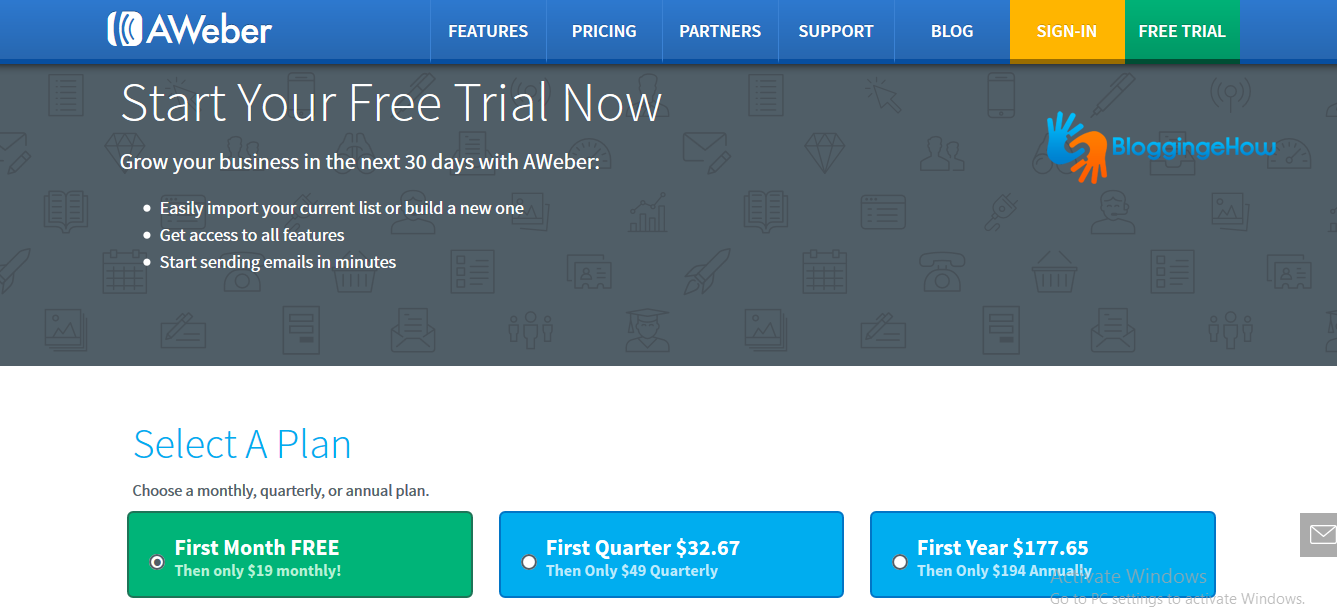Remember when you first started in this business? How mind-boggling all the terminology was? And how even though now you know what mean – Do you really know what they mean to you?
CTR (click-through rate), conversion rate both are super important terms in both the SEO world as well as CPA (click per accusation), PPC (pay per click) and of course Email Marketing. It’s all about the conversion.
Improving your CTR and/or conversion rate just a mere fraction can mean huge differences in the income that you bring home at the end of the day from your efforts.
Adam at Affilorama layed out some interesting tips on this very subject. Read on to learn more!
……………………..
Click-Through Rate
As SEOs and online marketers, our first hurdle is to get people to click through to sites.
Whether that is from an ad, a social media post or a search engine results page, getting that first leap of faith from a user is key. It’s not much when you step back and look at it. It’s just a click.
We’re not asking for a major organ, a date or even money, right?
But what we are asking is time and attention — two things that are in short supply online.
A click is more than the simple millisecond push of a finger. It’s a commitment to go to another site, to invest time and energy in digesting your content and possibly acting on it. If you don’t do a good enough job convincing the user that it’s worth their commitment, you’re sabotaging your sales funnel before they can even get into it.
Calculating CTR
Click-through rate (CTR) is simply the number of people who saw your ad, search engine listing, post or other marketing content and clicked to learn more.
To calculate CTR, take the amount of impressions (the number of people who saw your ad) and divide it by the number of clicks you got.
Please note that impression data is not available through a standard analytics setup like Google Analytics, since those impressions occur on third-party sites like Facebook, an ad network, a search engine results page or other web pages your ad appears on. However, these third-party sites and networks all have tools to measure CTR and help you optimize your ads. So, the data should be available.
CTR and SEO
Most online marketers think that conversion rates are solely the concern of marketers who use paid advertising like AdWords or Facebook ads to drive traffic.
While CTR is a huge factor in paid advertising, it also should be a concern for those of us who rely on the world of SEO for our traffic.
If you look at the Google search engine results page, you’ll see a list of site titles, descriptions and features like Authorship images, site links and other content produced by special structured data.
This is more than just indexed content presented in an easy to digest manner. These are ads fighting for the searcher’s attention.
While higher rankings are always great, you need to focus on your click-through rate to truly gauge your success. You can have the no. 1 ranking all day long, but it doesn’t help you any if the no. 2 spot gets all the clicks.
Finding Your Organic CTR
If you’re interested in finding out what your click-through rates look like for different searches, then it’s time to fire upGoogle Webmaster Tools.

- From the GWT home page, select the site profile.
- Open the drop down menu that reads “Search Traffic.”
- Click on “Search Queries.”
From this dashboard, you will be able to see:
- Your overall impressions and clicks
- A breakdown of search queries that brought your site up in the results pages
- The impressions, clicks, CTR and average position for each term
This is extremely powerful information even the first time you use it. But the real power comes from using it to gauge whether your SEO activities have helped increase your CTR and traffic.
When you make a change like adding Google Authorship to your account and linking your website to it, you can now track whether or not your CTR changes.
How to Increase CTR
If you’ve pulled this data and found your CTR to be wanting, then it’s time to make some changes.
The best way to increase your organic click-through rate is to make adjustments to three main areas:
Title Meta Tag
- Make sure you are getting the name of your site across clearly.
- Don’t try to slam your keyword in multiple times. Once is enough.
- Keep the characters limited to 70 or less to avoid truncation.
- Use a real sentence or sentence fragment to express as much value as possible.
Description Meta Tag
- This is where you can seal the deal for the click. Make your description engaging and leave them wanting more.
- Don’t keyword stuff.
- Keep it under 150 characters or at least make the first 150 characters powerful enough to make them want to click.
Structured Data
Depending on your business, the kind of structured data you will want to populate will differ. It will also vary based on the search engine.
But the point is to have the right markup language on your site, one that relays the important information for your business. That might be a menu, your hours, your Authorship image or something else entirely. You can’t force search engines to populate these extras, but you can help them find it by coding your site correctly.
Conversion Rate
Congratulations, you have gotten the click! Your foot is in the door but you’re only halfway there.
Your new visitor is interested in learning more, but now you need to seal the deal by delivering on the promises your ad or search engine listing made.
The conversion takes place whenever the user does whatever it is you want them to. Typically, a conversion is a sale. But if your goal is to build an email list, then a conversion could be a sign up. If you run a brick-and-mortar business, a conversion might be an online visitor looking up your hours and directions. Maybe a phone call (attached to a tracking number) is what you’re after.
How to Calculate Conversion Rate
Conversion rates are a lot easier to calculate because they are based on data that you get “in house,” for the most part.
Take the number of conversions and divide that by the number of visitors, then turn that into a percentage.
Simple, clean and easy!
How to Improve Conversion Rates
If you have good rankings and solid click-through rates but your conversions are in the dumpster, there is a disconnect somewhere.
The three most common causes of low conversion rates are:
- A disconnect between the ad or search engine listing and the site’s content: Imagine seeing a sign for a pizza place and then walking inside to discover it only serves Chinese food. You might sell some fried rice, but for the most part you’re not going to do very well. Make sure you are targeting the right keywords, writing descriptions and titles that match your content and delivering on your promises with that content.
- Poor site design and architecture: If your site looks like a 1990s GeoCities page that a junior high kid made for a school project, don’t expect people to throw their money at you. Make sure your site looks good, has a clean/modern design and is easy to navigate.
- Poor Content: If you craft content that is chock full of mistakes, rambles on and doesn’t clearly provide the information and value your visitors are looking for, then your conversion rate is going to suffer.
Track, Test and Improve Constantly
Click-through rate improvement and conversion rate optimization are not one-time things.
You need to do your legwork, know your numbers and work on improving your site constantly. There is no end to the factors and site elements you can tweak, test and build on to make your site’s overall performance better.
Website improvement is like a shark: if it stops moving it will die. You’re not going to hit pay dirt with every test or tweak, but just keep testing and moving forward and your site will be dominating the competition sooner than you think.
Original article: Affilorama.com Arthur: Adam Hansen





Greetings! Very helpful advice within this post!
It’s the little changes that produce the greatest changes.
Thanks a lot for sharing!
Thanks to my father who informed me concerning this website, this webpage
is actually remarkable.